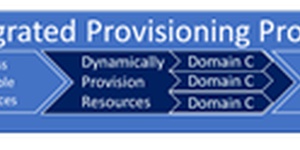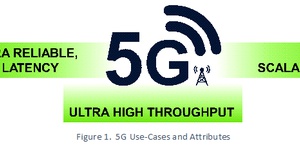
Whitepapers
Business Case Analysis on Hewlett Packard Enterprise SDN/NFV Based Approach to Gi-LAN Services
ACG conducted an analysis of a typical scenario that a service provider faces when migrating to a VMO based Gi LAN network to expand network scale. The scenario assumes an existing Gi LAN infrastructure and the choice to continue with PMO versus a VMO based deployment. The study found a reduction of TCO level, but more importantly a substantial gain in revenue volume based on only two new services (audio/video streaming and fee-based Apps) over five years as a result of faster time-to-market for a “new service” creation (32 percent of the time it would take to deploy the same services relative to the PMO solution). The study also found that per increase in scaling of new services for VMO, an additional cumulative revenue of $27 million can be realized for every 50,000 subscribers that sign up with SP’s increased service portfolio. For every 3 percent margin of error in traffic volume forecast, close to $1.3 million was wasted per over-dimensioning the network infrastructure.
Contact sales@acgcc.com to discuss your business case analysis.
You might like similar whitepapers


MODERNIZING THE CABLE SERVICE DELIVERY INFRASTRUCTURE

The Economic Benefits of the Ciena Virtualized Edge Solution

Itential Vendor Profile: Automation and Orchestration for Multi-Domain Networks

AUTOMATING 5G ACCESS DEPLOYMENTS

Meet Market Needs with Software-Enabled Solutions

Delivering Policy Continuity at Scale in Cloud IT and Managed Network Services

Virtualization Journey: Cable Companies Are on Their Way

ECONOMIC BENEFITS OF THE VMWARE TELCO CLOUD AUTOMATION AND HORIZONTAL INFRASTRUCTURE

Always On, Active Analytics and AI for Superior Performance in Digitally Powered Enterprises

Lenovo: Data Center Switch Solutions for Enterprise Data Centers

Hybrid Networks: Integrated Provisioning for Virtual and Physical Networks

THE POWER OF DIFFERENTIATION: BUILDING BROADBAND FOR 2021 AND BEYOND

Mitigating Market Challenges in Telecommunications

Achieving End-to-End Intelligence in the Cable Access Network

INTRODUCING xHAUL REWRITING THE PLAYBOOK FOR TRANSPORT NETWORKING IN THE RAN IN 5G

Orchestrating Dynamic Enterprise Services

Maximizing Efficiency Using Standards-Based, Model-Driven Infrastructures in NFV Deployments

Coriant’s Multi-Sided Platform Partner Program: Market Impact Report

Disruption Propelling Massive Changes in Video Market

Segment Routing: An ACG Research Whitepaper

Using Open Virtual RANs in 5G

Propelling Operators to L3 Operations Autonomy and Beyond with Huawei ADN

5G Service Assurance: The Case for AIOps

THE BUSINESS CASE FOR ADAPTIVE IP

The Economic Benefits of Automating Capacity Optimization in IP Networks

The Right Container Platform(s) for Modern OSS and BSS

Tunnel-Based versus Tunnel-Free SD-WAN

Simplifying IP Networks

TCO Benefits of Converged 5G Ready IP Transport

Broadband Access Transformation

Accelerating Revenue and Innovation in CSPs' Distributed Clouds

The TCO Benefits of Dell’s Next-Generation Telco Servers

Next-Generation Cloud Metro Network Requirements and Architectures

The Economic Benefits of Virtual Edge Services

Comparing Broadband Network Architectures in the Evolving Connectivity Landscape

THE ECONOMIC BENEFITS OF IP TRANSPORT AT 400G

The Economic Benefits of a Super-Converged Multi-Access Edge Network

An Approach to Offering Profitable Managed Network Services

The Evolution of Broadband Traffic: A Forecast for the Americas, EMEA, and APAC Regions

Building the Business Case for AI in Wireless Networks: Juniper Mist AI TCO Report

The Missing Guide in SP Managed Services Profitability

The Economic Benefits of Distributed Broadband Services

5G Service Assurance: The Case for AIOps

Nuage/ALU on the VNS Solution in an SP Context

The Economic Benefits of Juniper Apstra and CN2 in a Modern 5G Network





